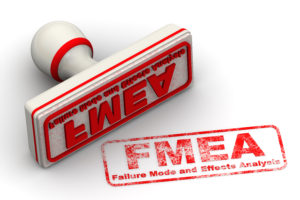Modeling Your Requirements Using SysML
Instead of doing textual requirements, Let SysML be your requirements modeling tool
Instead of doing textual requirements, Let SysML be your requirements modeling tool
As a systems engineer, how do you perform functional allocation or functional decomposition? How do you identify [these functions] and [this system] and then specify how they work together? In this blog, I will explain three different approaches. I will evaluate the pluses and the minuses of each method and finally propose a new approach.
The Digital Thread – Is Model Based System Engineering (MBSE) Weaving the Fabric? The term digital thread has become something of a buzzword lately that goes beyond the aerospace and defense industries to include manufacturing and other sophisticated physical systems. Systems engineering is a part of that digital thread. Specifically, Model-based systems engineering (MBSE) is…
Can you learn SysML or any other language in 3 Days? The answer to this is probably no. However, most people can at least learn the grammatical structure and how to form sentences. Off To A Good Start Many system engineering customers are sold on a particular tool, and are convinced a 3-day training course in…
Perform MBCD before requirements to model your project scope with needs, goals, objectives, ground rules, assumptions, constraints, and customer expectations.
 I have noticed an increasing trend where more and more companies and government agencies are required by contract to perform Failure Modes Effects Analysis (FMEA). For example, the Food and Drug Administration (FDA) has mandated that FMEAs must be done for any product that is put out on the market. In general, every company that is producing any product should have a design and a FMEA. That same design should trace to requirements, define any hazards that may exist, and should be able to demonstrate the failure modes. Similarly, many original equipment manufacturers (OEMs) are following suit in requiring FMEAs in the production of parts and in the making of devices. For this reason, medical, aerospace, and automotive companies alike, all understand the need to generate FMEA tables and forms in order to prove acceptability in the marketplace. Traditionally FMEAs are captured in a spreadsheet format, either by tools like Windchill Quality Solutions, ReliaSoft’s Xfmea, or simply captured in Excel. Because my focus is modeling systems designs, I am in the process of developing a modeling technique which can enable systems engineers to easily access, create, trace, model the information they need. …
I have noticed an increasing trend where more and more companies and government agencies are required by contract to perform Failure Modes Effects Analysis (FMEA). For example, the Food and Drug Administration (FDA) has mandated that FMEAs must be done for any product that is put out on the market. In general, every company that is producing any product should have a design and a FMEA. That same design should trace to requirements, define any hazards that may exist, and should be able to demonstrate the failure modes. Similarly, many original equipment manufacturers (OEMs) are following suit in requiring FMEAs in the production of parts and in the making of devices. For this reason, medical, aerospace, and automotive companies alike, all understand the need to generate FMEA tables and forms in order to prove acceptability in the marketplace. Traditionally FMEAs are captured in a spreadsheet format, either by tools like Windchill Quality Solutions, ReliaSoft’s Xfmea, or simply captured in Excel. Because my focus is modeling systems designs, I am in the process of developing a modeling technique which can enable systems engineers to easily access, create, trace, model the information they need. …
An Appeal to All Systems Engineers Required to Learn SysML For those of you who already know the language, who aspire to do modeling, or who want to document and design your system, I am not submitting to you. However, I am quite certain there is an entire class of engineers who could care less about…
In modeling your system is it possible to go beyond what’s called for? I would argue, yes and have defined the term: promiscutivity. That is, when the goal of productivity in your model goes so far that it becomes unrestrained (promiscuous). In other words, you have done more in your model than you ever needed…
Integration – Can You Live Without It?Good tool integration is much like your smart phone, you don’t know you need it until you see how it can work for you. Too often corporate executives mandate from the top that a model-based method of systems engineering must be followed because this has become standard industry protocol,…
There are many commercial off-the-shelf tools supporting Systems Engineering activities. Some tools support a generic SE process while other tools support specific parts of the process. Without direct experience with a tool it is hard for SE practitioners to understand in what way and to which extent a tool can fit their specific needs and…